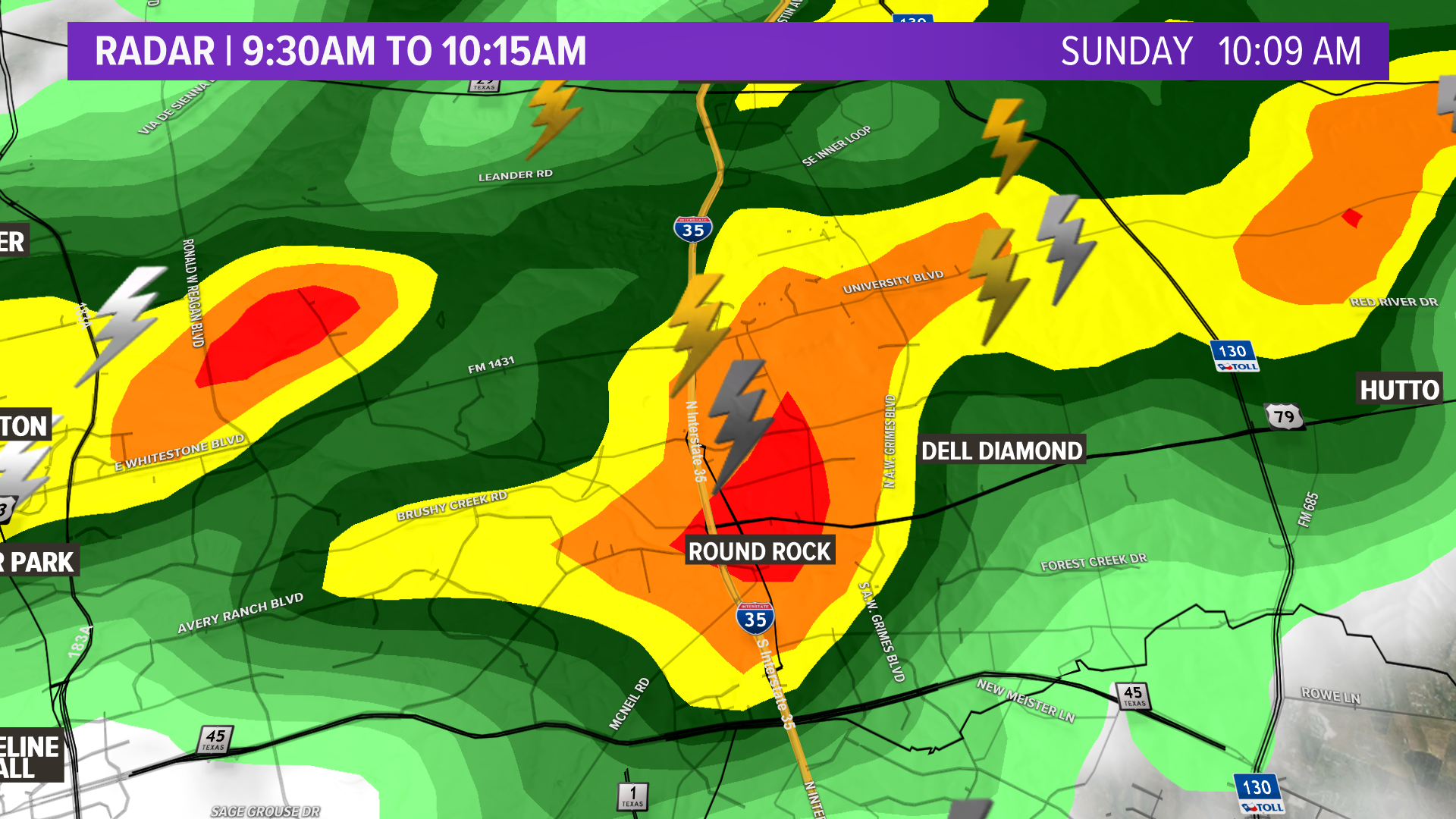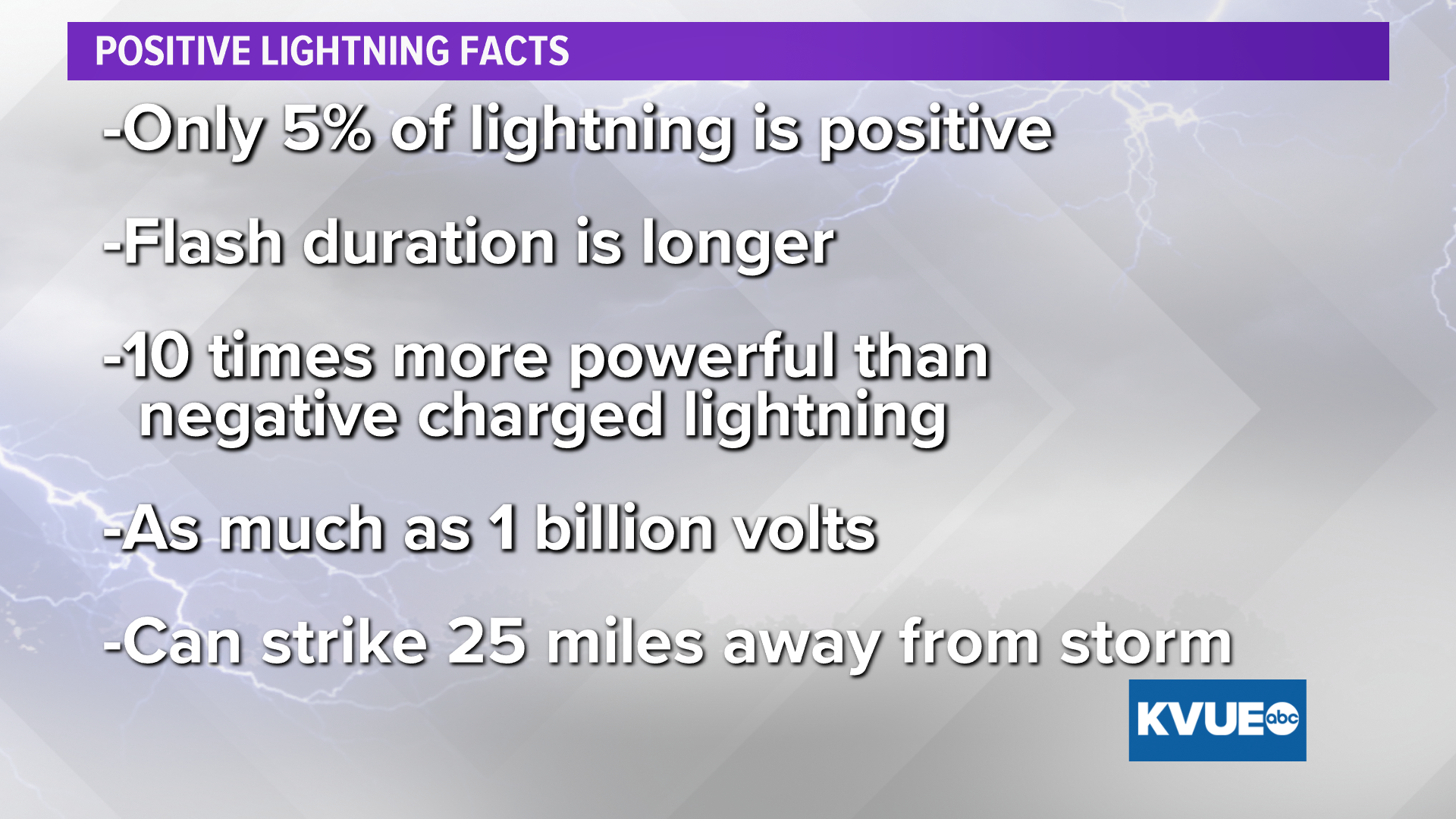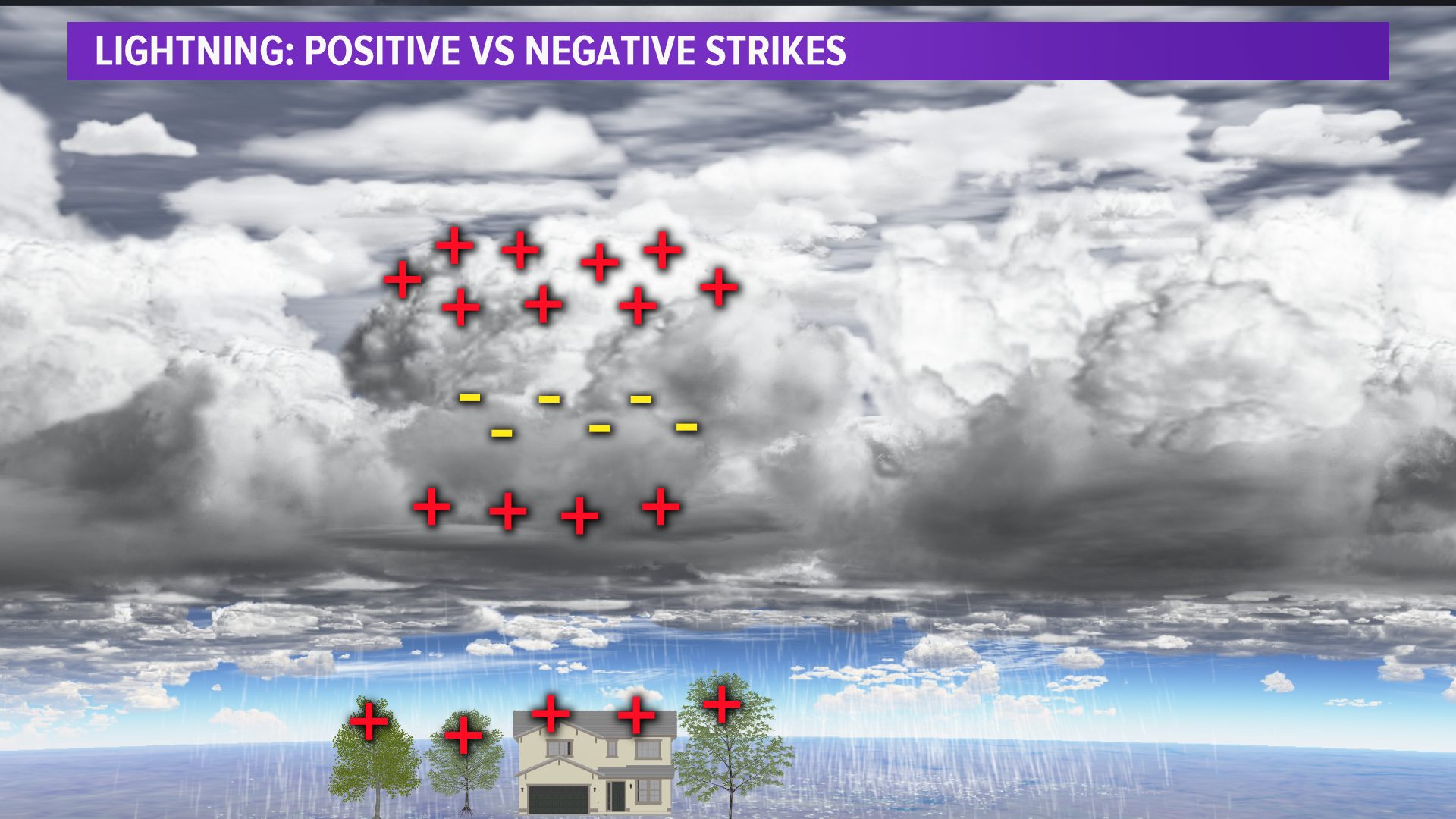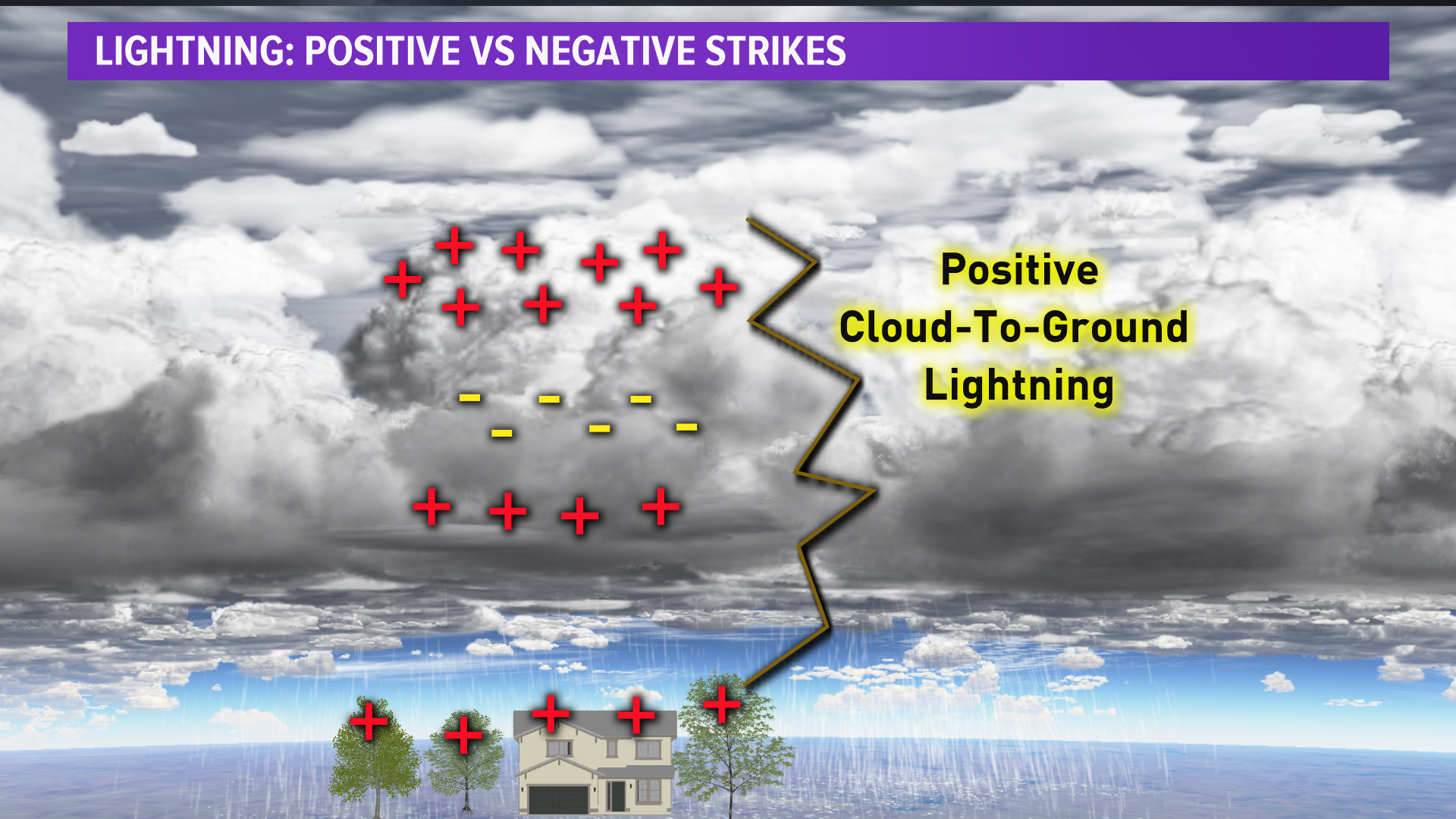Sunday morning, three people including two law enforcement officers were shocked by lightning.
Round Rock police said the officers and a law enforcement support technician were shocked while they were working a crime scene around 10 a.m. All three were taken to the hospital out of caution, but were released shortly thereafter.
Looking back through this morning's radar data, the KVUE Storm Team found several lightning strikes that occurred along Interstate Highway 35 in Round Rock near that time, several of which were detected as positive lightning strikes.

Positive lightning strikes are fairly rare, making up only about 5 percent of all lightning. They are also more dangerous for a couple different reasons. They can be as much as ten times stronger than other lightning strikes, or one billion volts. To put that into perspective, a standard light bulb has a current of 120 volts.
Also, positive lightning strikes often strike land far away from an actual thunderstorm -- as far as 25 miles to be exact.

But what exactly is a positive lightning strike and how is it different from other forms of lightning?
To begin, even on the hottest summer day, temperatures fall well below freezing high up in a thunderstorm. As air rises inside of it, ice crystals will collide with other chunks of ice such as hail or graupel.

The ice crystals become positively charged towards the top of the thunderstorm, and the larger ice becomes negatively charged closer to the base of the thunderstorm.

In an effort to balance out these charges, nature distributes these rapid transfers of energy through the use of lightning. Most times, the lightning occurs inside the clouds, also known as intra-cloud lightning. Other times, objects at the surface, such as trees or houses, act as a positive charge. Most times, cloud-to-ground lightning originates from the bottom of a thunderstorm, which will then transfer a negative charge to the ground. These are called negative lightning strikes.
However, every once in awhile a positive charge originating from the top of a thunderstorm will strike the surface bringing a positive charge with it. These flashes of lightning often last longer and are significantly more deadly. This is known as a positive lightning strike.

From 1987 through 2016, an average of 47 people lose their lives in the U.S. due to lightning, according to the National Weather Service. Texas averages the second most fatalities from lightning per year behind Florida.
If you hear thunder and see lightning, you could be struck by lightning from where you are. When thunder roars, go indoors.

